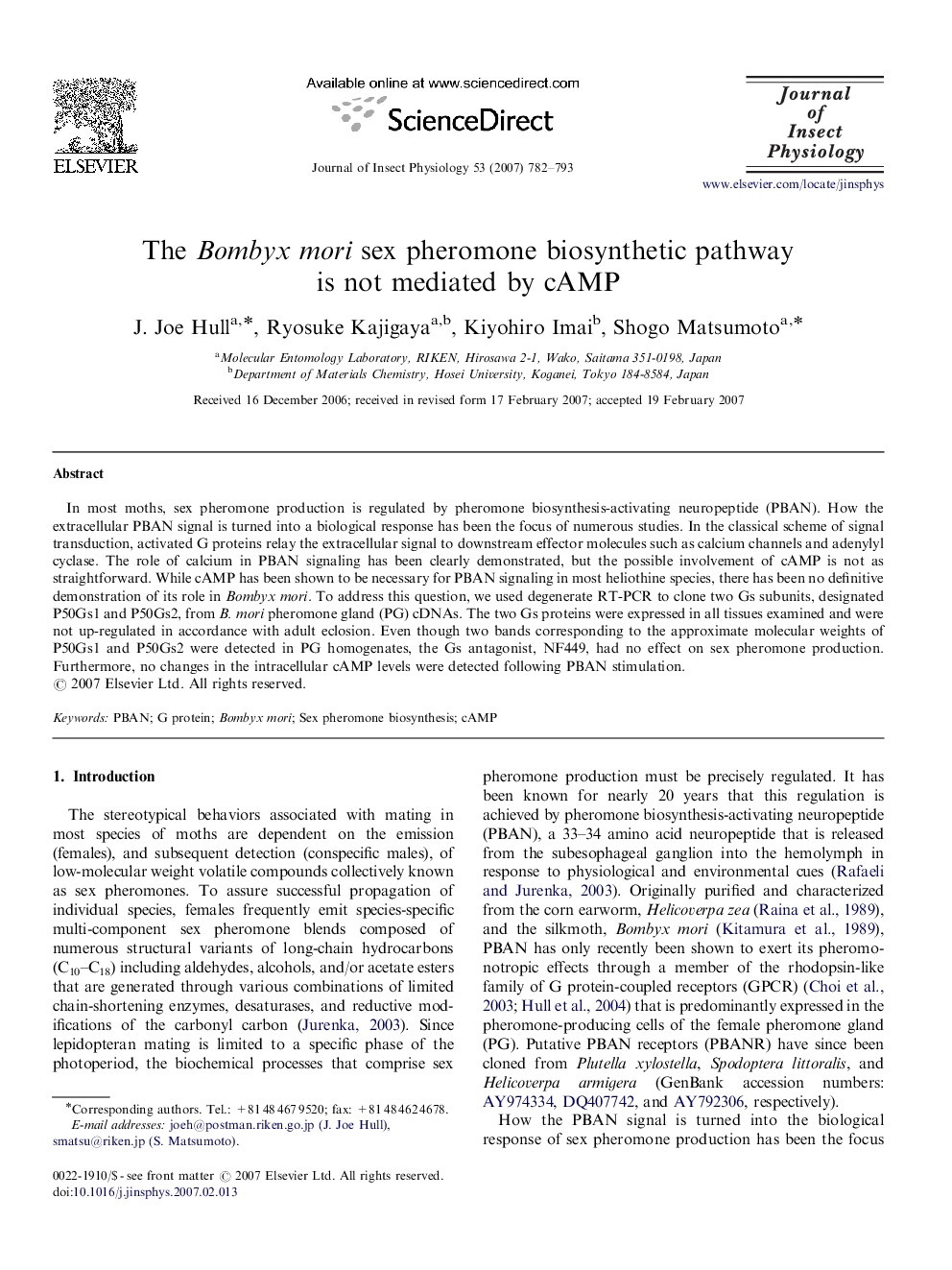| Article ID | Journal | Published Year | Pages | File Type |
|---|---|---|---|---|
| 2841381 | Journal of Insect Physiology | 2007 | 12 Pages |
In most moths, sex pheromone production is regulated by pheromone biosynthesis-activating neuropeptide (PBAN). How the extracellular PBAN signal is turned into a biological response has been the focus of numerous studies. In the classical scheme of signal transduction, activated G proteins relay the extracellular signal to downstream effector molecules such as calcium channels and adenylyl cyclase. The role of calcium in PBAN signaling has been clearly demonstrated, but the possible involvement of cAMP is not as straightforward. While cAMP has been shown to be necessary for PBAN signaling in most heliothine species, there has been no definitive demonstration of its role in Bombyx mori. To address this question, we used degenerate RT-PCR to clone two Gs subunits, designated P50Gs1 and P50Gs2, from B. mori pheromone gland (PG) cDNAs. The two Gs proteins were expressed in all tissues examined and were not up-regulated in accordance with adult eclosion. Even though two bands corresponding to the approximate molecular weights of P50Gs1 and P50Gs2 were detected in PG homogenates, the Gs antagonist, NF449, had no effect on sex pheromone production. Furthermore, no changes in the intracellular cAMP levels were detected following PBAN stimulation.
